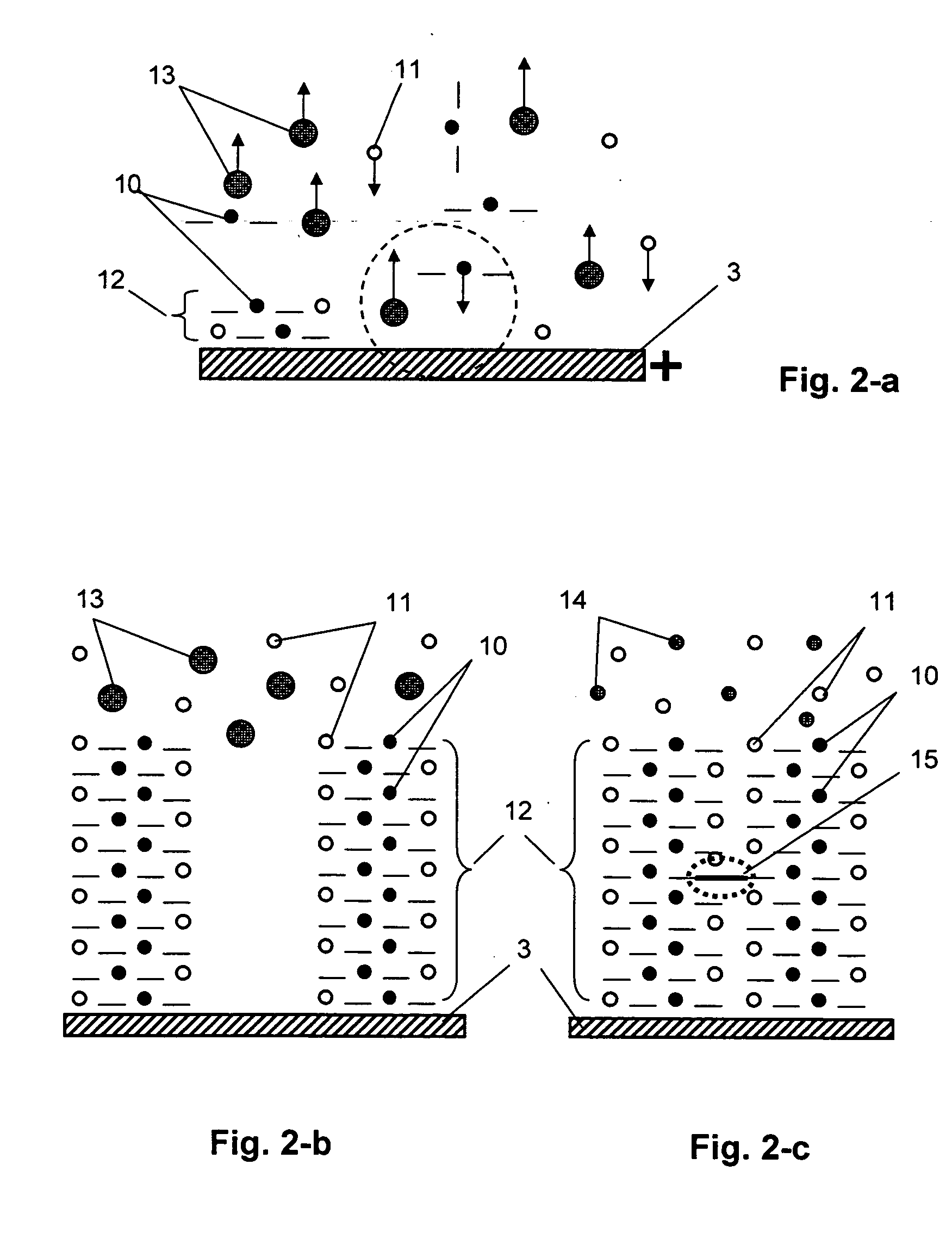Method of manufacture of an electrode for electrochemical devices
a manufacturing method and electrode technology, applied in the field of electrochemical devices, can solve the problem of reducing the probability of stack cross-linking, and achieve the effect of improving the quality of the manufactured electrod
- Summary
- Abstract
- Description
- Claims
- Application Information
AI Technical Summary
Benefits of technology
Problems solved by technology
Method used
Image
Examples
Embodiment Construction
[0023] A schematic diagram of an apparatus for depositing the redox polymer layer onto a substrate of an electrode in accordance with the inventive method is shown in FIG. 1. The apparatus comprises the following components. Reservoir 1 is filled with electrolyte 2, into which conducting substrate 3, comparison electrode 4 (e.g. a chlorine-silver electrode), and counter electrode 5 are submerged. Substrate 3 is electrically connected to the positive pole of voltage source 6, while counter electrode 5 is connected to the negative pole of voltage source 6. Control instruments for measuring and monitoring the voltage between substrate 3 and counter electrode 5 (voltmeter 7), voltage between substrate 3 and comparison electrode 4 (voltmeter 8) and the intensity of current flowing in the circuit of substrate 3 (ampere meter 9) are connected according to the scheme shown in FIG. 1.
[0024] Electrolyte 2 can be prepared based on organic solvents of the acetonitrile, dimethyl ketone, or prop...
PUM
 Login to View More
Login to View More Abstract
Description
Claims
Application Information
 Login to View More
Login to View More - R&D
- Intellectual Property
- Life Sciences
- Materials
- Tech Scout
- Unparalleled Data Quality
- Higher Quality Content
- 60% Fewer Hallucinations
Browse by: Latest US Patents, China's latest patents, Technical Efficacy Thesaurus, Application Domain, Technology Topic, Popular Technical Reports.
© 2025 PatSnap. All rights reserved.Legal|Privacy policy|Modern Slavery Act Transparency Statement|Sitemap|About US| Contact US: help@patsnap.com



